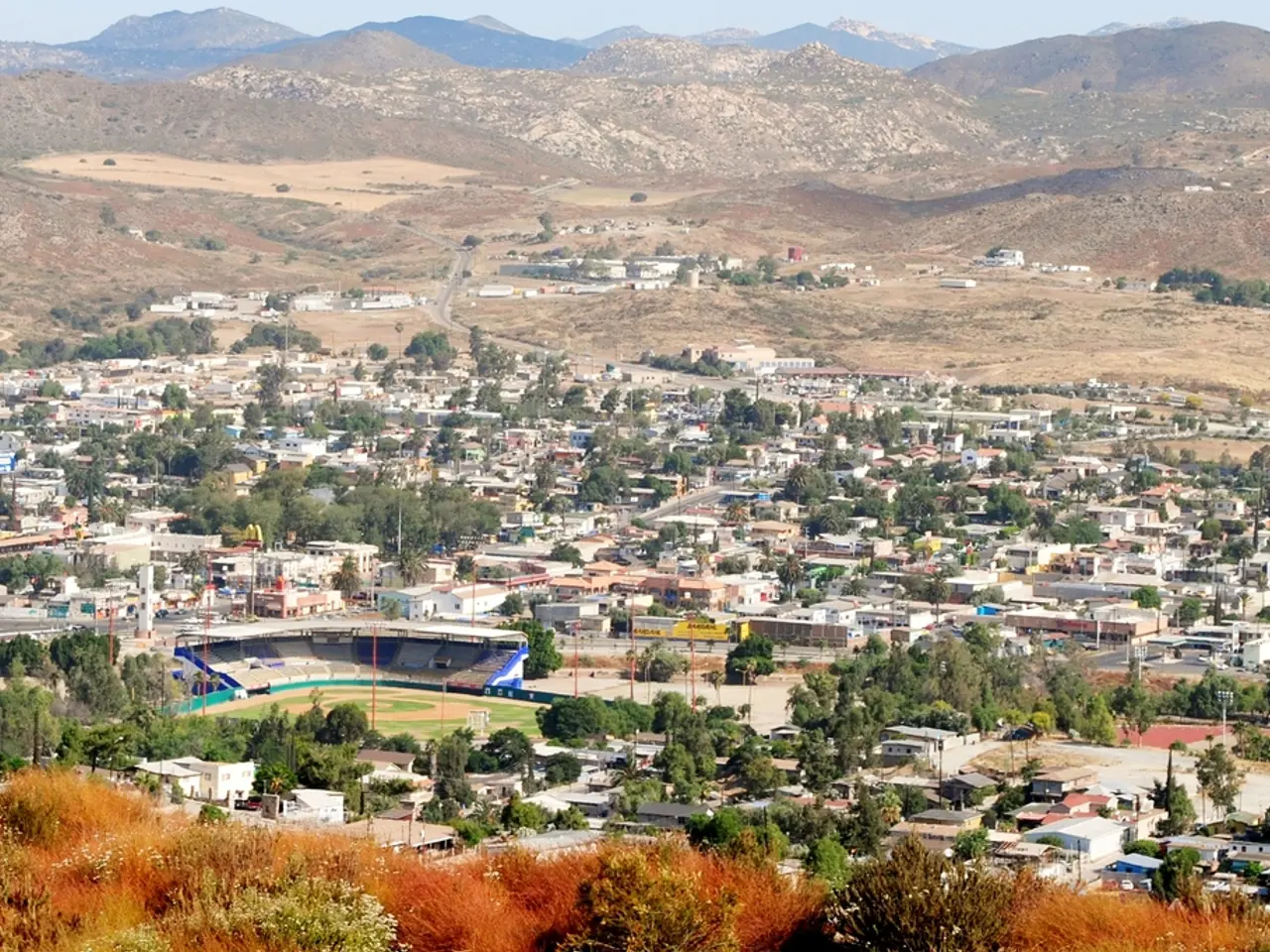United Kingdom's residential property prices exhibit the most significant growth since the closing of 2022, nationwide.
The UK housing market saw a pickup in annual house price growth during September 2023, with the average UK property price standing at £266,094, according to the Nationwide House Price Index.
The latest rise in UK house prices is attributed to August's interest rate cut, falling mortgage rates, and inflation staying closer to the Bank of England's 2% target. Terraced houses have seen the biggest percentage rise in prices over the last 12 months, with an average increase of 3.5%. Semi-detached homes and flats followed closely, with increases of 2.8% and 2.7% respectively. Detached houses saw more modest growth of 1.7%.
However, the current predictions for UK house price trends in the remaining months of 2023 suggest a modest increase in prices, ranging from about 1% to 2%, reflecting a slowdown compared to earlier forecasts. This slowdown is attributed to a greater supply of homes and mortgage rates remaining higher than expected.
Rightmove has reduced its 2023 house price growth forecast from 4% to 2%, citing stable buyer demand and a typically busier autumn period, which may support some price stability or modest rises in the short term. Zoopla has halved its house price growth forecast for 2023 from 2% to 1%, highlighting improved affordability as a positive factor despite slow growth. Savills and other estate agents have also lowered their estimates, with Savills now expecting only about 1% growth in 2023 but projecting stronger growth from 2026 onwards as mortgage affordability improves and the economy strengthens.
The Bank of England has encouraged lenders to loosen affordability rules, allowing some borrowers to take on larger mortgages, which may support demand and price growth in the near term. However, there is a regional divide in the UK, with prices in the north rising 3.1% annually compared to 1.3% in the south. The North West region in England had the highest annual price growth of all English regions, with a 5.0% increase.
London remains the best performing southern region, with an annual price growth of 2.0%. East Anglia is the only UK region to record a year-on-year price fall, with prices down 0.8%. Across England, typical house prices increased by 1.9% in September 2023. Average prices in Scotland rose 4.3% annually, while Wales saw a more modest 2.5% year-on-year rise.
Northern Ireland recorded the highest level of growth, with average prices up 8.6% compared with the third quarter of 2023. It's worth noting that UK house prices are still around 2% below the all-time highs recorded in summer 2022.
The fastest pace of growth for average UK house prices was recorded in November 2022, with a 4.4% increase. Despite the slowdown in growth, the UK housing market is expected to continue with relatively soft price growth (around 1-2%) for the remainder of 2023, with the possibility of stronger increases in subsequent years as economic and lending conditions evolve.
[1] The Guardian [2] BBC News [3] Rightmove [4] Zoopla [5] Savills
- The increased interest rates have led to a slower growth in the UK housing market for the remaining months of 2023, according to finance predictions from The Guardian and Zoopla.
- Falling mortgage rates and the improved affordability are contributing factors to the modest growth in real-estate prices, with the average UK property cost standing at £266,094, as reported by the Nationwide House Price Index.
- Investors looking for opportunities in housing-market investing may find value in properties in the North West region of England, which saw the highest annual price growth of all English regions at 5.0%.




